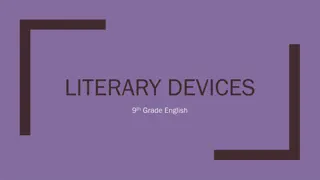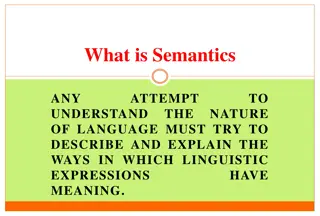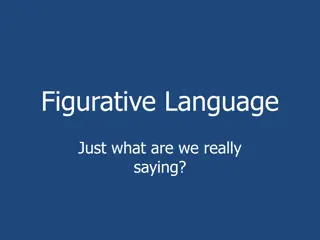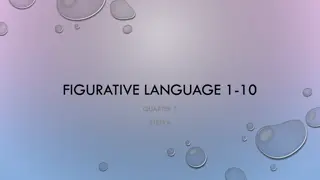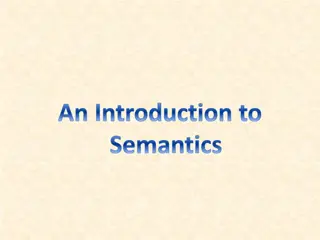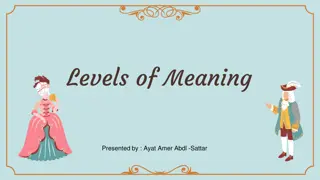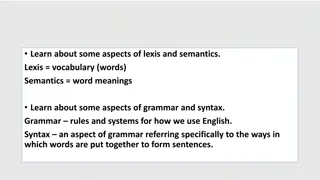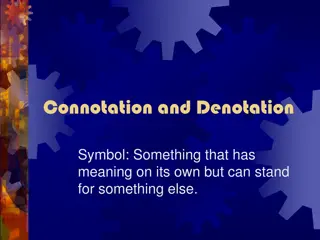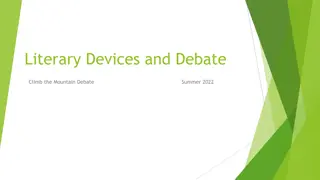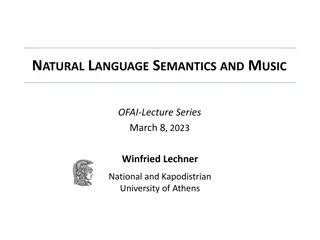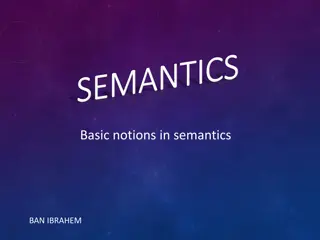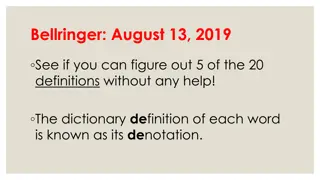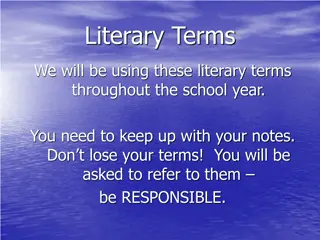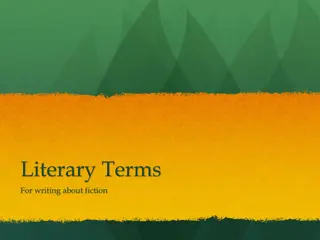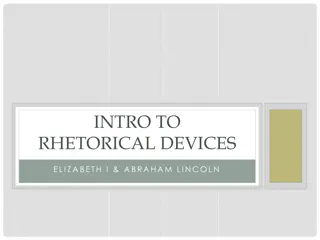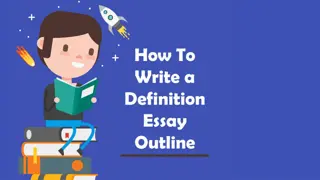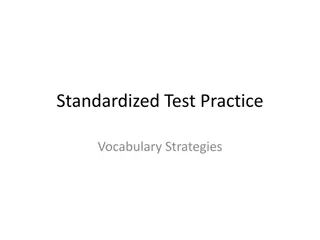Understanding Connotation and Denotation in Language
Explore the concepts of connotation and denotation in language through examples and explanations. Understand how words convey emotional weight and associations beyond their dictionary definitions. Delve into the significance of connotations in shaping our perceptions of words and their meanings.
Download Presentation

Please find below an Image/Link to download the presentation.
The content on the website is provided AS IS for your information and personal use only. It may not be sold, licensed, or shared on other websites without obtaining consent from the author. Download presentation by click this link. If you encounter any issues during the download, it is possible that the publisher has removed the file from their server.
E N D
Presentation Transcript
CONNOTATION AND DENOTATION FSA Reading Targeted Standards Review
DEFINITION Denotation is a word s dictionary definition Connotation is the emotional weight a word carries, or the associations implied by the word.
LETS SEE IT IN ACTION Consider the verb work. I worked in the yard this weekend. worked creates the sense of purposeful activity I slaved away all weekend in the yard. slaved away has the added meaning of strenuous, continuous labor I plugged away until the yard was mowed. plugged away suggests persistence. **Although all three words generally mean the same thing, the shades of meaning are what give each word its unique connotations**
TAKE A CLOSER LOOK AT THESE EXAMPLES Proud confident arrogant haughty Young childish immature Reserved timid withdrawn inhibited **Notice how the words change from positive to neutral connotations to negative**
WHY DOES IT EVEN MATTER? James opened the kitchen door. The aroma of stew wafted in the air. As a curious James peered into the simmering ragout, he could see the slender carrots he had grown this fall. James flung open the kitchen door. The odor of stew hung in the air. As a nosy James glared into the roiling concoction, he could see the scrawny carrots he had grown this fall.
LETS PRACTICE Are you waiting for a new breakfast food that s more than just a cereal? Your wait is over. Verve! is a new morning meal that tastes great and is easy to prepare. Verve! was created with cutting-edge science to ensure you get all the healthy vitamins and minerals you need to get your day started. But unlike most healthy cereals, the taste of Verve! is exceptional. Verve! is not only flavorful, it is made from the best whole grains and protein available on the world market. Whole grains and brown rice give Verve! its crunchy, crisp texture. Then we added nature s sugar coconut milk and blended it with dark, robust cinnamon from Asia. The blend of flavors and textures is something you will not forget. Verve! is easy and convenient. Its bold, all-natural taste will get you going on the right foot! So be adventuresome add some energy to your morning. Add Verve! You ll be delighted you did!
THEN WE ADDED NATURES SUGAR COCONUT MILK AND BLENDED IT WITH DARK, ROBUST CINNAMON FROM ASIA. What is the connotation of the word dark in the passage? A. murky B. somber C. deep and rich D. not light in color **The word dark is used to describe the cinnamon.**
The author uses words with positive connotations because A. people who eat cereal are healthier and happier. B. the author wants people to buy the cereal. C. it is the only cereal the author eats. D. every cereal tastes delicious. **The words an author chooses often reflect the author s purpose.**
LETS COLLABORATE.AND THEN ASSESS! With your shoulder partner, read My Antonia and answer the questions in the margin. Each partner needs to record the answers on their own sheet of paper. I will display the FSA-style multiple choice and short answer questions on the board. When you are finished, we will take the mini assessment for this week s skills!


